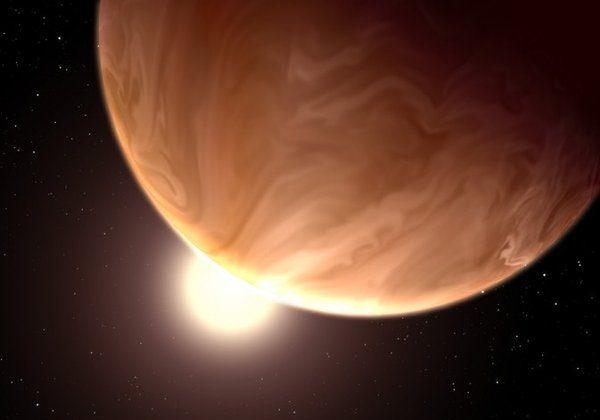On a Super-Earth, alien clouds have been discovered.
GJ 1214b, a planet that’s much bigger than Earth (Thus, known as a “Super-Earth), ”is the smallest and most Earth-like world yet to yield the secrets of its atmosphere,” reported Nature.
A new study outlines the discovery, as well as hints of clouds on another world, GJ 436b, which is similar in size to Neptune.
“We always knew the clouds must be there for some planets, but now we have a wave of results telling us that clouds are actually very common,” Heather Knutson, a planetary astronomer at the California Institute of Technology in Pasadena and lead author of study about the hints of clouds, told Nature.
Scientists study the atmosphere on the planets during its passages in front of their stars, using the Hubble Space Telescope.
The Earth-like world was found to have a spectral imprint of water-rich atmosphere that indicated the planet is swathed in clouds. While the atmosphere could mostly be water vapor, “we found there also have to be clouds,” said Laura Kreidberg, of the University of Chicago in Illinois, who led the team studying the planet.
The scientists concluded in the study abstract that “high altitude, optically reflective clouds located west from the substellar point are present in its atmosphere. We find that a silicate-based cloud composition is a possible candidate.”
Further, “Our analysis does not only present evidence of optically thick clouds on Kepler-7b but also yields the first map of clouds in an exoplanet atmosphere,” they write.

NASA & ESA
GJ 1214b is 40 light-years away in the constellation Ophiuchus. GJ 436b, the planet similar to Neptune, is 36 light years from Earth in the constellation Leo.
In the case of GJ 436b, Knutson said that she and her colleagues found proof that it either has a cloudy atmosphere or “one that is weighed down by heavy molecules such as water or methane,” according to Nature.
“The data indicate that the planet’s transmission spectrum is featureless, ruling out cloud-free, hydrogen-dominated atmosphere models,” Knutson and her colleagues, Björn Benneke, Drake Deming, and Derek Homeier, wrote in the study abstract.
Julianne Moses of the Space Science Institute in Boulder, Colo, who was not involved in the research, wrote a commentary on the papers.
“Super-Earth and Neptune-class planets collectively represent an intriguing and populous type of extrasolar planet whose exotic atmosphere may have no true analogies in the solar system,” she wrote.
“However, high-altitude clouds on these two exoplanets would not resemble the clouds we see in the solar system,” Moses wrote. “Possible candidates include potassium chloride or zinc sulphide ‘dust’ clouds.”





